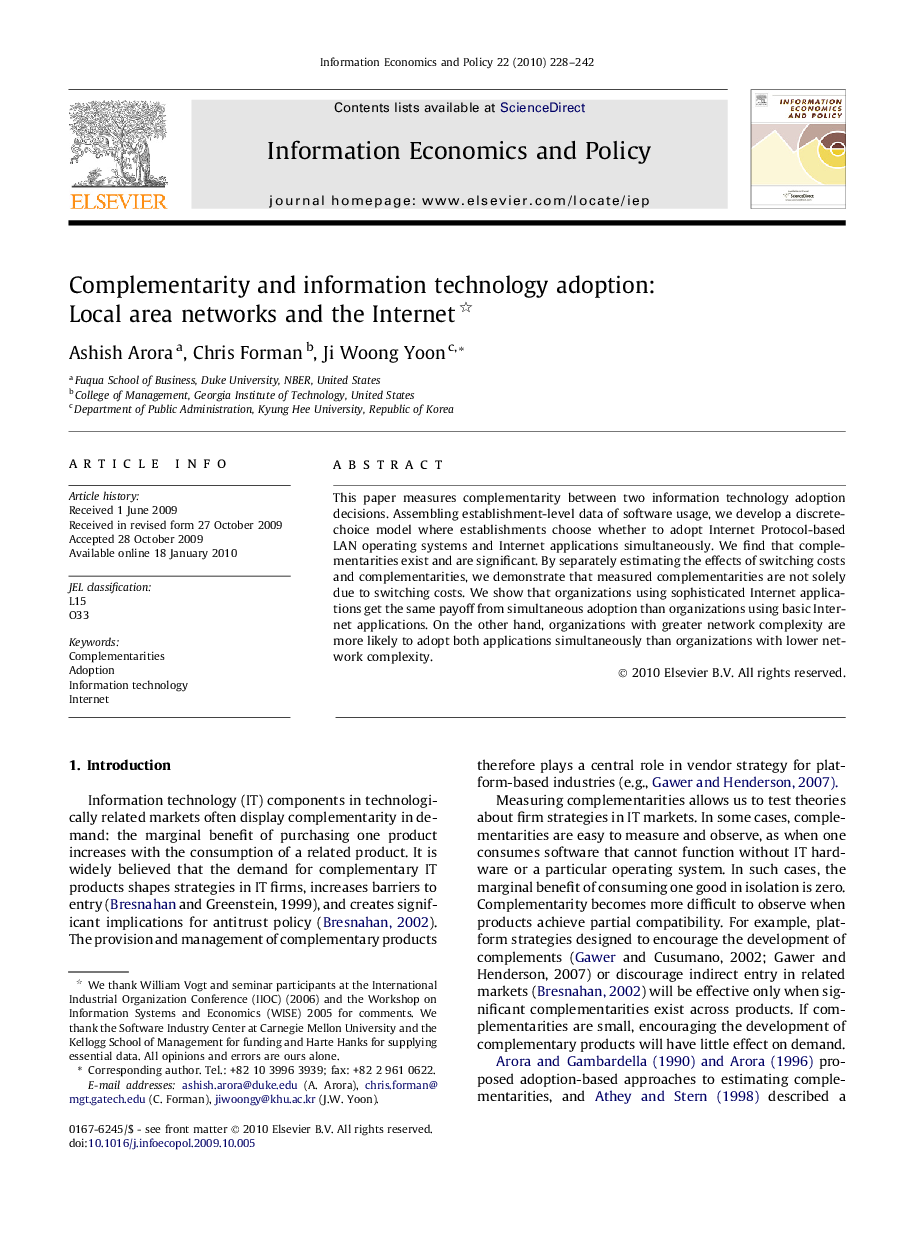| Article ID | Journal | Published Year | Pages | File Type |
|---|---|---|---|---|
| 5075831 | Information Economics and Policy | 2010 | 15 Pages |
Abstract
This paper measures complementarity between two information technology adoption decisions. Assembling establishment-level data of software usage, we develop a discrete-choice model where establishments choose whether to adopt Internet Protocol-based LAN operating systems and Internet applications simultaneously. We find that complementarities exist and are significant. By separately estimating the effects of switching costs and complementarities, we demonstrate that measured complementarities are not solely due to switching costs. We show that organizations using sophisticated Internet applications get the same payoff from simultaneous adoption than organizations using basic Internet applications. On the other hand, organizations with greater network complexity are more likely to adopt both applications simultaneously than organizations with lower network complexity.
Related Topics
Social Sciences and Humanities
Business, Management and Accounting
Management of Technology and Innovation
Authors
Ashish Arora, Chris Forman, Ji Woong Yoon,
